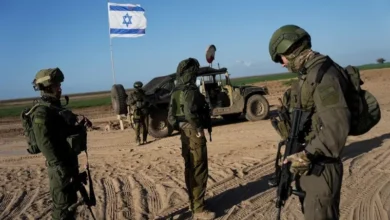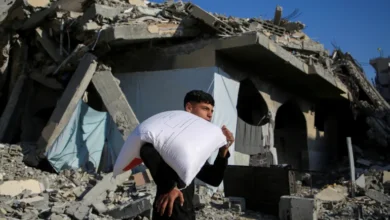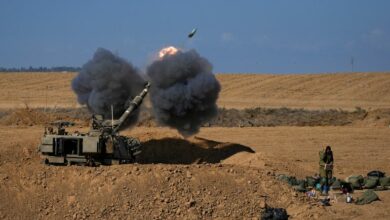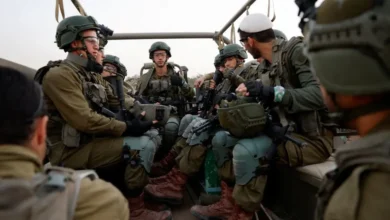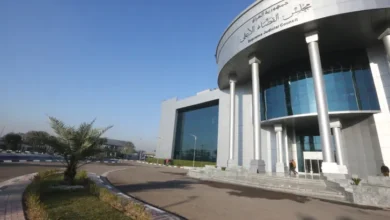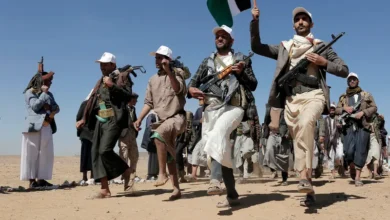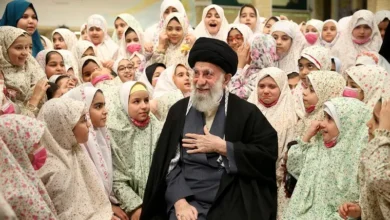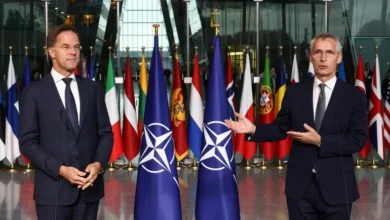‘Drowning in own blood’: Kin of Israeli victims of Hamas still want peace

Before Hamas’s unprecedented incursion into Israeli territory on October 7, Kibbutz Be’eri was a cherished corner of paradise.
Located in the northwestern Negev desert, its avocado groves and cotton, wheat and barley fields were shared among the close-knit group of residents practising the communal way of life rooted in a socialist brand of Zionism.
Its 1,100 inhabitants had grown accustomed to the sounds of the air defence system occasionally intercepting incoming rockets from the nearby Gaza Strip, but visitors were often startled by the glaring reminder of a decades-long conflict that otherwise went on largely unseen.
Ariella Giniger visited her friend Vivian Silver, a 74-year-old, Canadian-born peace activist, two weeks before the surprise attack killed 1,200 people in southern Israel, including about 100 Be’eri residents.
During an early morning walk in the wilderness, they came across the fence running 41km (25 miles) northwards along the perimeter of the enclave. “I was a little nervous looking at Gaza,” Giniger, 70, told Al Jazeera. “I said, ‘Let’s go back, so that we’re in time for yoga’, and we had a beautiful breakfast.”
On October 4, days before the manicured landscape became a scene of death and devastation, Silver, a founding member of the Israeli-Palestinian Women Wage Peace (WWP) movement, marched from Jerusalem alongside Israeli and Palestinian women advocating for a peaceful, women-led solution to the conflict.
The march was the culmination of years of work, and they gathered around a symbolic negotiation table as they reached the shores of the Dead Sea. “We called for an agreement as opposed to a ‘settlement’ or an ‘arrangement’,” Giniger, an active member of the WWP, said. “An agreement is something that both sides agree upon. We thought any mother in the world would want that.”
Three days later, on the day now commonly referred to as Black Saturday, Hamas fighters tore through the fence that had kept two worlds largely separate. They targeted border areas in Israel, many of which happened to be historical leftist strongholds where residents identify as proponents of peace.
Silver, who moved to Israel from Winnipeg in 1973 to engage in peace work, was confirmed this week to be among the victims. Her remains were identified in Kibbutz Be’eri, dashing hopes that she might have been captured and taken to Gaza with about 240 other people.
Talks of reconciliation among Israeli leftists have largely been replaced by raw sentiments of pain and grief amid widespread support for Israel’s war on Gaza. In the hours after the Hamas attack, Israeli Prime Minister, Benjamin Netanyahu promised to “take mighty vengeance” and “turn Gaza into a deserted island”. He launched a relentless bombing campaign followed by a ground invasion that has since killed at least 11,500 Palestinians in Gaza, including more than 4,700 children.
Some bereaved Israelis are determined not to let their losses be used to justify taking revenge on the people of Gaza, even as any prospects for peace seem more outlandish than ever. “We are just drowning in our own violence and blood,” Yonatan Zeigen, Silver’s 35-year-old son, told Al Jazeera. “Israel won’t cure our dead babies by killing more babies.”
Silver was one among several victims known to regularly volunteer to drive sick Palestinians from the Gaza border to hospitals in Israel for treatment. Before June 2007 when Hamas took control of the enclave and Israel imposed a blockade, she would visit Palestinian communities in a bid to forge dialogue.
“My mother believed in human encounters. She did a lot to get people from both sides together to humanise each other and to see that, in the end, we all want peaceful lives,” Zeigen said.
“The concept of resistance cannot be eradicated with force but with peace. So the question now is, is there an option for peace?”
Building bridges
Individual efforts to build bridges often run counter to the security approach undertaken by the Israeli government. An estimated 2.3 million Palestinians have been confined for the best part of two decades to live in 365sq km (140sq miles) under severe restrictions on the economy and their movement. According to the Israeli watchdog B’Tselem, in 2022, Israel denied more than 20,000 requests from patients seeking medical care in Israeli hospitals. The grounds for rejection are never disclosed.
Gaza, described as an “open-air prison” by human rights watchdogs, was born out of the mass exodus of Palestinians during the war that followed the creation of Israel in May 1948. More than 700,000 Palestinians were displaced from their homes, an event remembered as the Nakba, which means “catastrophe”.
Across the fence surrounding the crowded strip, kibbutz residents live in towns that once bore Palestinian names with allowances for home expansions as they have more children. The Law of Return passed by the Israeli parliament in 1950 gives Jews from across the world the right to relocate to the land and acquire citizenship, a process known as “making aliyah”.
Competing claims to the land and failed attempts at brokering a two-state solution have long rendered the Israeli-Palestinian conflict one of the most intractable in the world.
Udi Goren, a photographer and activist, was part of a group of Israelis and Palestinians offering dual narrative tours of the region before the recent hostilities ground tourism to a halt.
Goren’s own family has now been embroiled in the conflict. His 42-year-old cousin, Tal Haimi, was taken captive in Nir Yithak, a kibbutz 35km (22 miles) from Be’eri. The father of three is thought to have left a bomb shelter to face the assailants when it became clear that a ground assault was taking place.
